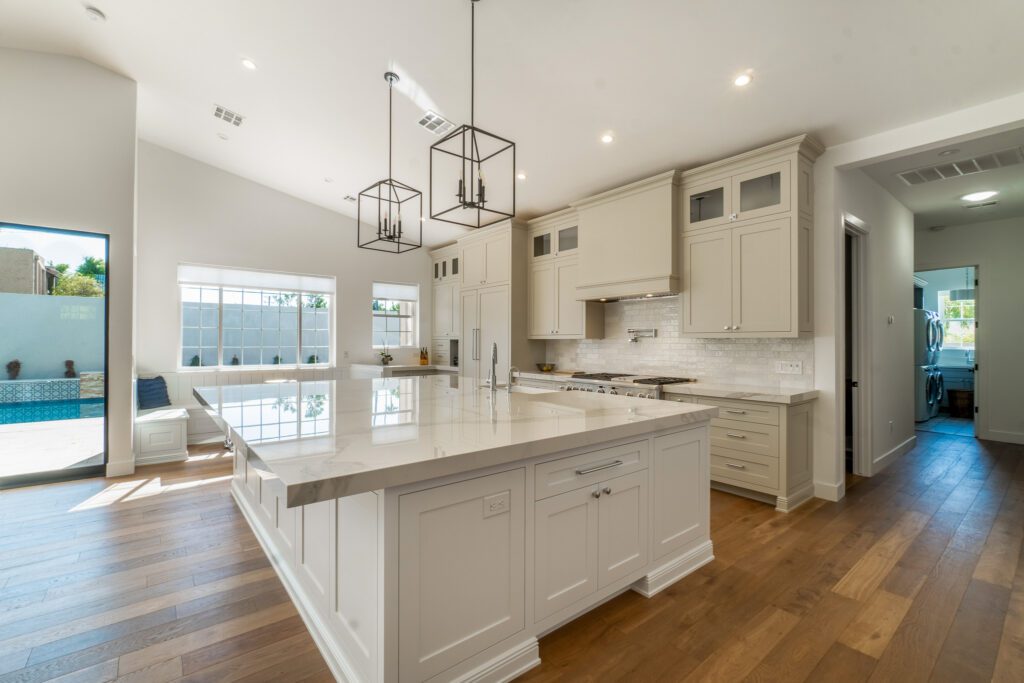Renovating a house can be exciting, whether updating your current home or flipping an investment property. However, one of the most critical questions homeowners face when embarking on a renovation is, “How much will it cost?” The cost to renovate a house can vary significantly depending on the size of the home, the scope of the work, materials used, labor costs, and your geographic location.
In this article, we’ll break down the key factors that affect renovation costs, typical expenses for different types of renovations, and how to budget for your project.
Factors That Affect the Cost of a Home Renovation
Several variables influence the cost of a home renovation. Understanding these factors will help you create a realistic budget.
Size of the House
The size of the house is a primary factor in determining renovation costs. Larger homes require more materials and labor, which drives up the price. Renovating a 2,000-square-foot home will cost more than remodeling a smaller 1,000-square-foot space. Contractors typically price their work based on square footage; the more area they need to cover, the more you’ll pay.
Scope of the Renovation
Are you planning a full-scale remodel or a cosmetic refresh? The scope of your project has a significant impact on costs:
- Cosmetic Renovations include surface-level changes such as painting, updating flooring, and replacing fixtures. Cosmetic updates are generally the least expensive, costing between $10 and $60 per square foot.
- Structural Renovations: These involve changes to the home’s structure, such as knocking down walls, adding rooms, or updating plumbing and electrical systems. Structural work is far more expensive and can cost anywhere from $50 to $200 per square foot.
- Full Home Remodel: The most expensive home remodel involves redoing multiple rooms. It can easily range from $100,000 to $300,000, depending on the home’s size and the level of luxury.
Quality of Materials
The quality of materials you choose for your renovation will significantly impact the final price. High-end materials, such as custom cabinetry, granite countertops, hardwood floors, and luxury appliances, come at a premium compared to more budget-friendly options. For example:
- Low-End Materials: $30 to $50 per square foot
- Mid-Range Materials: $50 to $100 per square foot
- High-End Materials: $100 to $200 per square foot or more
Labor Costs
Labor costs can vary based on your location and the complexity of the work. Generally, labor accounts for 20% to 35% of the total renovation budget. Urban areas with higher costs of living will likely have higher labor rates. Additionally, specialized trades like electrical work, plumbing, or custom cabinetry can come with higher hourly rates.
Geographic Location
Where you live also plays a significant role in renovation costs. Renovation prices are higher in major metropolitan areas compared to rural locations. For example, renovating a home in San Francisco, New York City, or Los Angeles will likely cost more than in smaller towns or regions with a lower cost of living.
Cost Breakdown for Common Renovation Projects
Here’s a closer look at the average costs associated with specific types of home renovations:
Kitchen Remodel
A kitchen renovation is one of the most popular (and expensive) home projects. Depending on the scope of the work, the average cost of a kitchen remodel can range from $10,000 to $50,000 or more. Here’s a breakdown of typical expenses:
- Minor kitchen remodel: $10,000 to $20,000
- Mid-range kitchen remodel: $20,000 to $40,000
- High-end kitchen remodel: $40,000 to $70,000 or more
Elements like custom cabinetry, countertops, high-end appliances, and luxury finishes can quickly escalate costs.
Bathroom Remodel
Bathroom renovations are another standard upgrade that can add significant value to your home. The average cost to renovate a bathroom ranges between $5,000 and $30,000, depending on the size and materials used:
- Small bathroom renovation: $5,000 to $10,000
- Mid-range bathroom renovation: $10,000 to $20,000
- High-end bathroom renovation: $20,000 to $50,000 or more
Costs will vary based on fixtures, flooring, tiles, and plumbing work. A luxury bathroom renovation with features like a walk-in shower, soaking tub, or heated floors will cost significantly more.
Living Room Renovation
Renovating a living room typically involves updating flooring, paint, and lighting, making it less expensive than renovating kitchens or bathrooms. However, costs can escalate if you add custom features like built-ins or upgraded windows. The average cost to renovate a living room falls between $5,000 and $15,000.
Basement Remodel
Turning an unfinished basement into a functional living space is a great way to add square footage to your home. Basement renovations can cost anywhere from $10,000 to $50,000 or more, depending on the scope of the work. The following factors will affect the cost:
- Insulation
- Flooring and walls
- Plumbing (if you’re adding a bathroom)
- Electrical work
- Egress windows (required in many areas for safety)
Roof Replacement
If your home’s roof needs replacing, it’s a significant expense but a necessary one. On average, roof replacement costs range from $5,000 to $15,000, depending on the roof size, the materials used, and the complexity of the roof design. Asphalt shingles are the most affordable option, while metal, tile, or slate roofs will cost more.
Home Addition
Adding square footage to your home, whether through a new room, an extra floor, or an extension, can be one of the most expensive renovations. The average cost of a home addition ranges from $20,000 to $100,000 or more. Factors like room type, foundation work, roofing, and materials will affect the overall cost.
Creating a Budget for Your Renovation
Once you know the average costs of your renovation project, you can create a detailed budget.
Set Priorities
List the most critical aspects of the renovation and allocate more of your budget to those areas. For example, if you’re remodeling your kitchen, you might prioritize high-quality countertops or appliances over new flooring.
Factor in Hidden Costs
Renovation projects often involve unexpected costs. Set aside 10% to 20% of your budget for contingencies, such as discovering hidden damage behind walls, plumbing issues, or electrical upgrades.
Get Multiple Quotes
It’s essential to get quotes from multiple contractors to compare pricing. Don’t automatically choose the cheapest option—consider experience, reputation, and previous work quality.
DIY vs. Hiring Professionals
While some homeowners do parts of the renovation themselves to save money, knowing your limits is essential. Complex work like electrical, plumbing, or structural changes should be left to professionals to ensure safety and compliance with building codes.
Financing Options for Home Renovations
Home renovations can be expensive, and most homeowners need more cash to pay for everything upfront. Fortunately, there are several financing options available:
- Home Equity Loan: Borrow against the equity in your home, often with lower interest rates than personal loans.
- Home Equity Line of Credit (HELOC): A revolving line of credit that allows you to borrow up to a specific limit as needed.
- Cash-Out Refinance: Refinance your mortgage for more than you currently owe and use the difference to pay for renovations.
- Personal Loan: An unsecured loan with higher interest rates but no collateral required.
- Credit Cards: Best for small, short-term expenses, but beware of high interest rates.
Conclusion
Renovating a house is a significant investment that can add value to your home, improve your quality of life, and even increase its resale value. The renovation cost will vary depending on the size of your home, the project scope, the quality of materials, and labor costs. By planning, setting a clear budget, and considering your financing options, you can successfully manage your renovation and avoid unexpected expenses. Whether you’re doing a simple refresh or a full-scale remodel, understanding the costs involved will help you make informed decisions.
“Explore Our Current Listings to Find Your Perfect Home with Sonic Realty“
“Learn More About Our Real Estate Services and How We Can Help You Buy or Sell Your Home”
Let me know if you need links for specific sections or pages on the website!
Thank you for reading! If you enjoyed this article and want to explore more content on similar topics, check out our other blogs at Sonic Loans, Sonic Realty, and Sonic Title. We have a wealth of information designed to help you navigate the world of real estate and finance. Happy reading!
Zoning: What It Is and How It Affects Your Property Rights
Will Realty Income Cut Dividend? Understanding the Factors at Play
Why Do Property Taxes Go Up?
Who Owes a Fiduciary Duty in Real Estate and What Does That Mean for Your Transaction?
What to Look for in a Real Estate Agent in Canton
What to Know About Filing a Property Tax Appeal
What to Expect at Closing in Dearborn, MI
What is a Townhome?
What Is a Tiny House? 12 Surprising Facts









